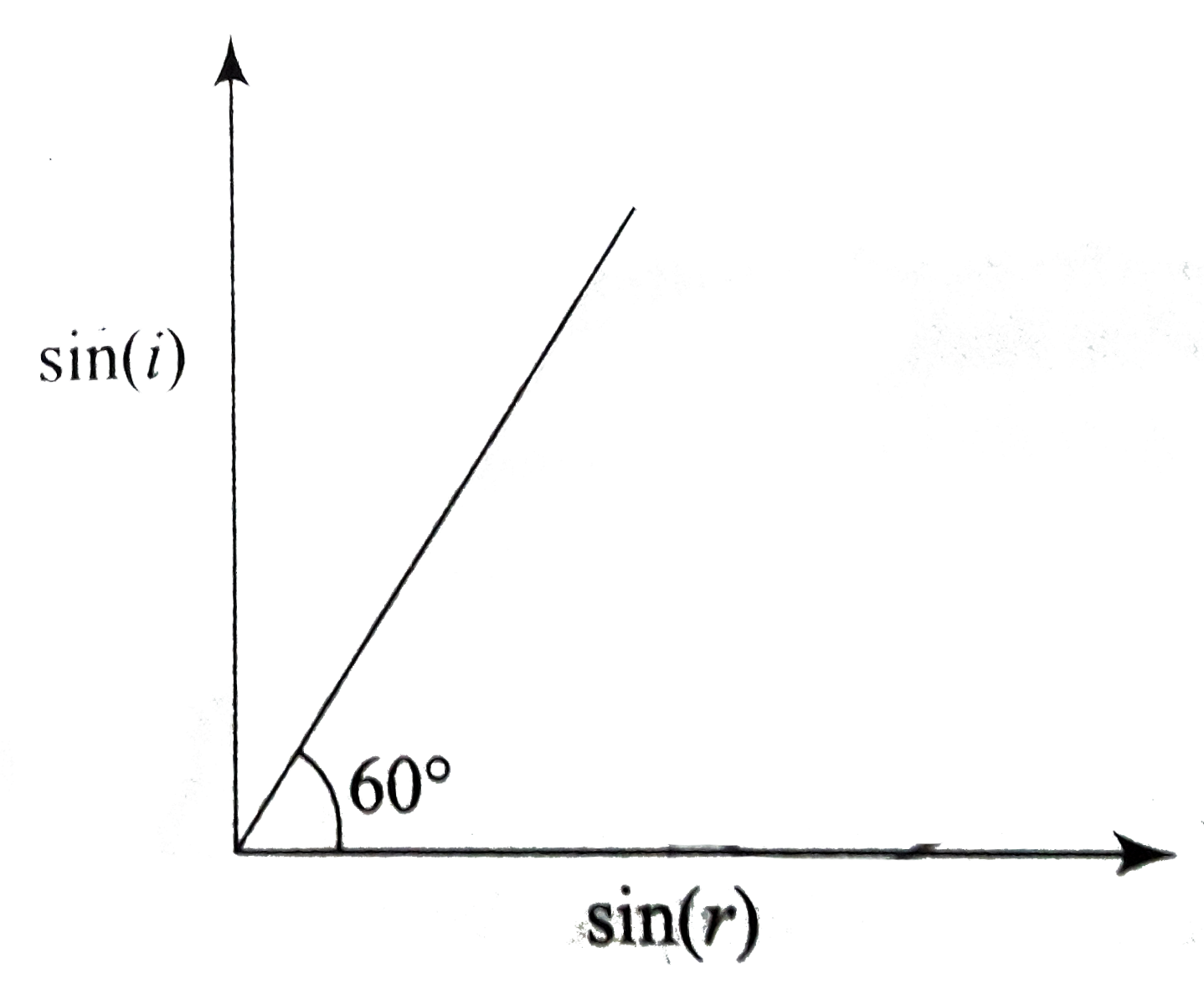For the same angle of incidence, the angles of refraction in three different media A, B and C are15∘,25∘ and 35∘ respectively. In which medium, will the velocity of light be minimum ?
To determine in which medium the velocity of light is minimum, we can follow these steps:
Step 1: Understand the relationship between refractive index and velocity of light
The refractive index (μ) of a medium is defined as the ratio of the speed of light in vacuum (c) to the speed of light in the medium (v):
μ=cv
This implies that the refractive index is inversely proportional to the velocity of light in the medium.
Step 2: Use Snell's Law to find the refractive indices
According to Snell's Law, the refractive index can also be expressed in terms of the angles of incidence (i) and refraction (r):
μ=sinisinr
For three different media A, B, and C, with respective angles of refraction rA=15∘, rB=25∘, and rC=35∘, we can express the refractive indices as follows:
- For medium A:
μA=sinisin15∘
- For medium B:
μB=sinisin25∘
- For medium C:
μC=sinisin35∘
Step 3: Compare the sine values
We know that the sine function increases with the angle. Therefore, we can compare the sine values:
sin15∘<sin25∘<sin35∘
This means:
μA>μB>μC
Step 4: Determine the velocity of light in each medium
Since the refractive index is inversely proportional to the velocity of light, we can conclude:
- Higher refractive index means lower velocity of light.
- Thus, since μA is the highest, the velocity of light in medium A will be the lowest.
Conclusion
The velocity of light will be minimum in medium A.
The refractive index (μ) of a medium is defined as the ratio of the speed of light in vacuum (c) to the speed of light in the medium (v):
μ=cv
This implies that the refractive index is inversely proportional to the velocity of light in the medium.
According to Snell's Law, the refractive index can also be expressed in terms of the angles of incidence (i) and refraction (r):
μ=sinisinr
For three different media A, B, and C, with respective angles of refraction rA=15∘, rB=25∘, and rC=35∘, we can express the refractive indices as follows:
- For medium A:
μA=sinisin15∘
- For medium B:
μB=sinisin25∘
- For medium C:
μC=sinisin35∘
We know that the sine function increases with the angle. Therefore, we can compare the sine values:
sin15∘<sin25∘<sin35∘
This means:
μA>μB>μC
Since the refractive index is inversely proportional to the velocity of light, we can conclude:
- Higher refractive index means lower velocity of light.
- Thus, since μA is the highest, the velocity of light in medium A will be the lowest.
The velocity of light will be minimum in medium A.
Topper's Solved these Questions
Similar Questions
For the same angle of incidence in media P,Q and R, the angles of refraction are 35∘,25∘,15∘ respectively. In which medium will the velocity of light be minimum?
View SolutionWrite a relationship between angle of incidence and angle of refraction for a given pair of media.
View SolutionLooking at the angle of refraction in the figures given Fig. B, which medium will have the maximum value of refractive index and in which medium will the speed of light be the least?

View SolutionA ray of light is incident on the surface of seperation of a medium at an angle 45∘ and is refracted in the medium at an angle 30∘. What will be the velocity of light in the medium?
View SolutionThe velocities of light in two different media are 2*108m/s and 2.5 * 108m/s respectively.The critical angle for these media is
View SolutionHow are the angle of incidence and angle of refraction related to each other when :
(a) a ray of light travels from rare to dense medium,
(b) a ray of light travles from dense to rare medium ?
View SolutionIf a ray of light in a denser medium strikes a rarer medium at an angle of incidence i, the angles of reflection and refraction are respectively, r and r' If the reflected and refraction rays are at right angles to each other, the critical angle for the given pair of media is
View SolutionA ray of light is incident on a medium with angle of incidence I and refracted into a second medium with angle of refraction r. The graph of sin(i)vssin(R) is as shown in figure. Then the velocity of light in the first medium in n times the velocity of light in the second medium. What shoul be th evalue of n?

View SolutionIn the diagrams given in Figure C, draw the angle of incidence and the angle of refraction. Identify which medium is rarer and which medium is denser.

View SolutionA ray of light incidents on a refracting surface at 30∘ with the surface . If the angle of refraction is 45∘ refractive index of the medium is
View Solution